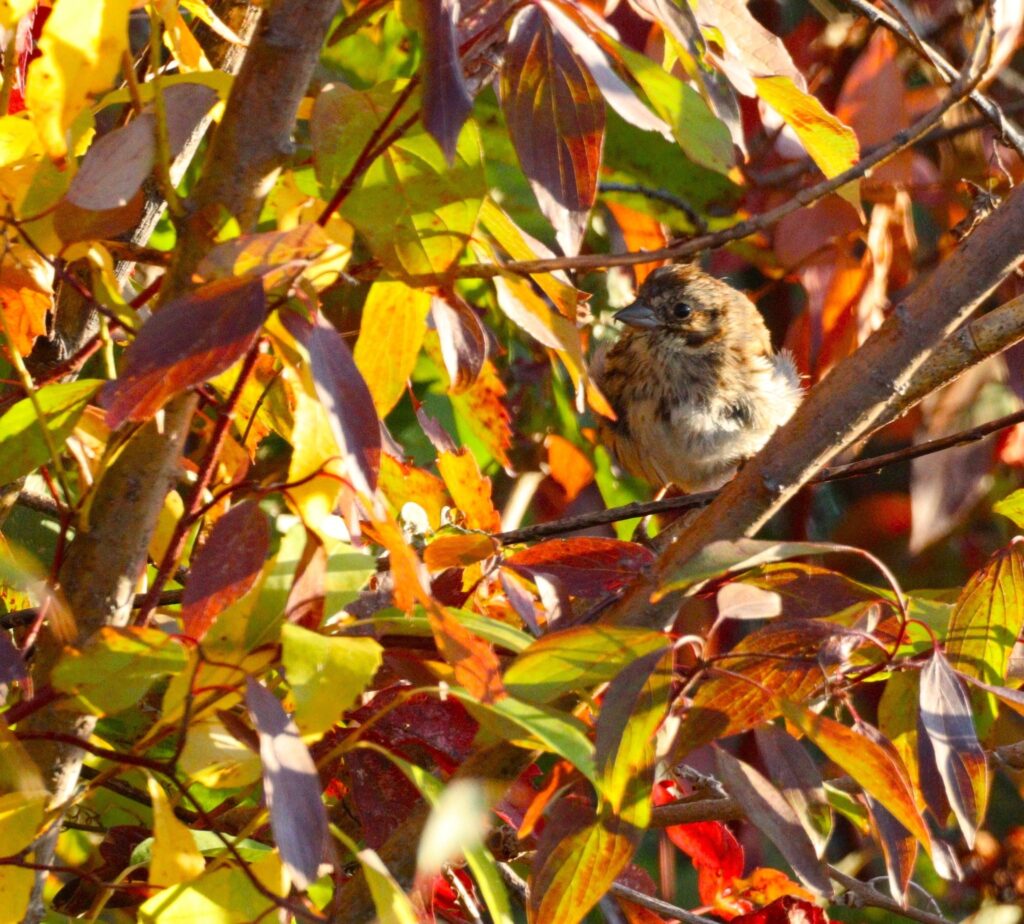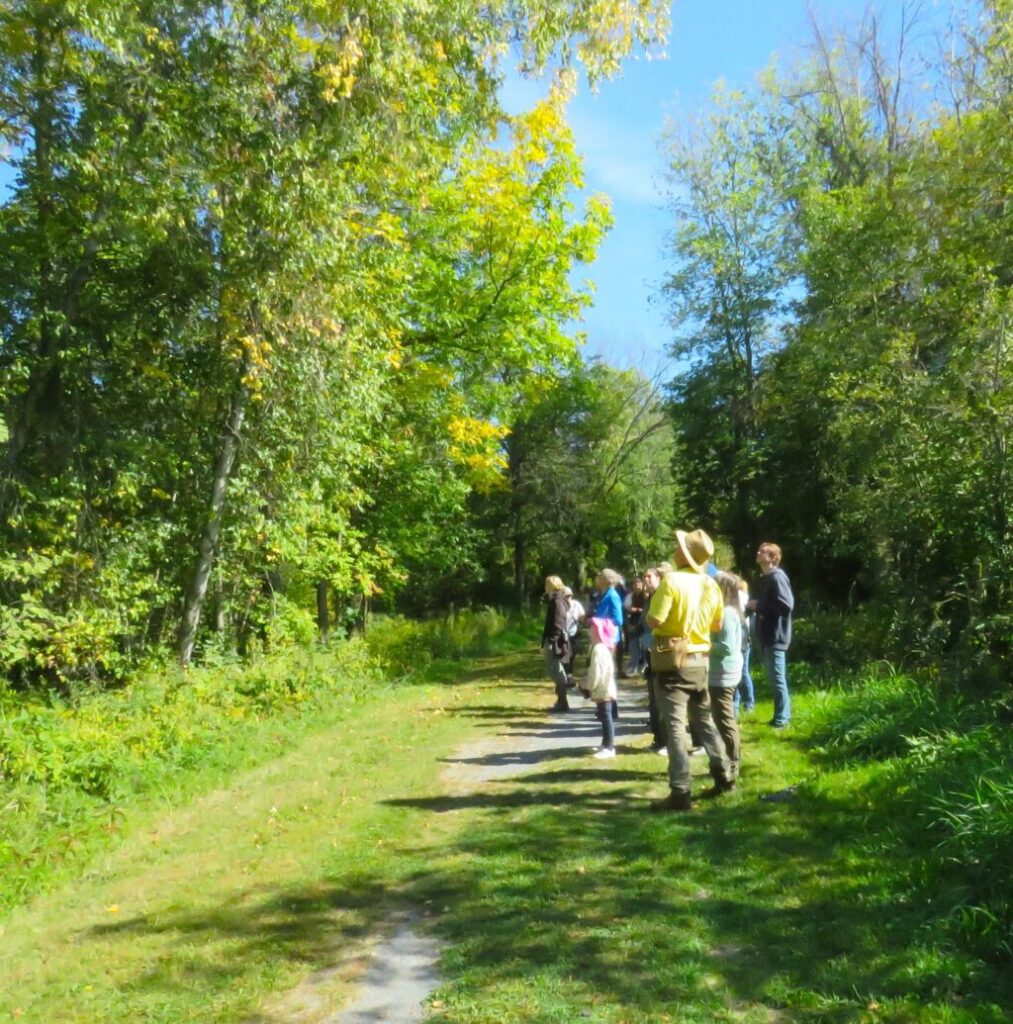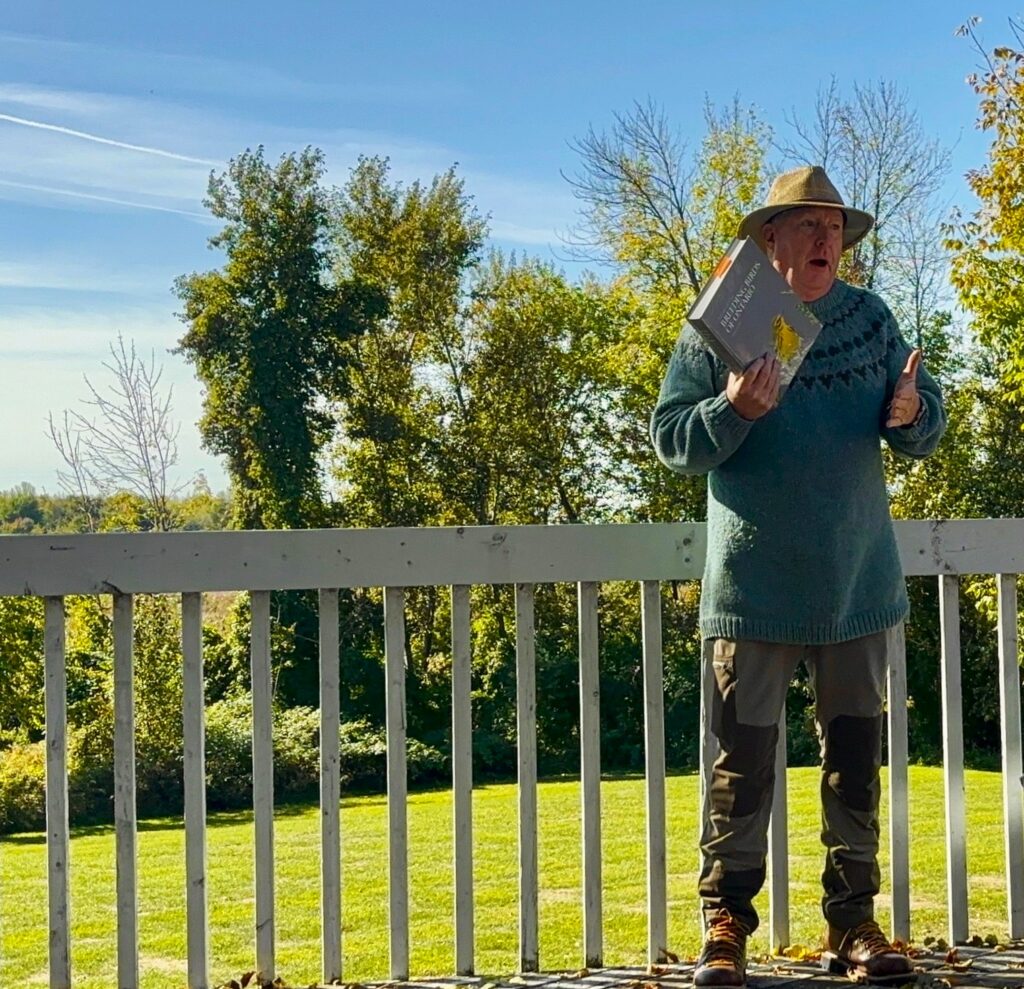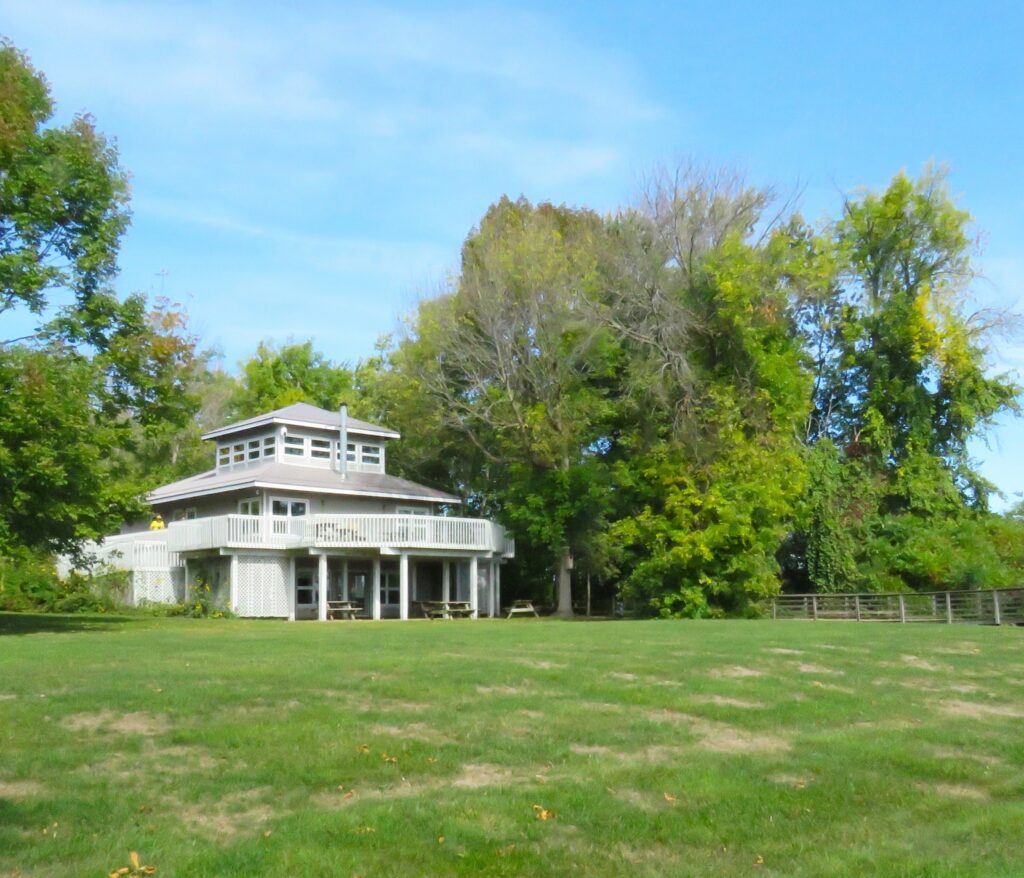Great Bird Watch at Cooper Marsh
On Sunday, September 21st, I attended the Great Bird Watch at Cooper Marsh hosted by the River Institute. We gathered on the upper patio for a presentation. Yanik Rozon, a Project Coordinator with the River Institute spoke to us about the iNaturalist app and its importance in contributing to community science. It can be used not only to identify bird species, but also to log observations. By doing that scientists can get a better idea of which species are present and which ones are changing over time.
Dr. Brian Hickey made a presentation on local birds. He spoke of the Ontario Breeding Bird Atlas, describing it as the most authoritative volume on bird distribution abundance in Ontario. The current volume is from 2001-2005, compiled from observations by amateurs who submit observations through apps such as iNaturalist. The atlases are published every 20 years and with observations now completed for the summer, all the data is gathered for the next one.
According to Dr. Hickey, we might think that the most important thing in finding birds is our eyes and a pair of binoculars, but he says the key is in the sounds. “Many species look very similar but have very different sounds,” he explained. “Birds are often cryptic. They hide in the leaves, so you often hear them before you see them. If you get to learn the common sounds, then you quickly learn to hear the different ones and might look harder for those.” He went on to tell us about apps that could help us identify the sounds such as the Merlin app from Cornell University.
For people new to birding, he recommended the book The Birds of Ontario by Lone Pine Publishing. It only deals with our province’s birds, not with those you are not likely to encounter in Ontario. He prefers using old-school field guides, he said, because in books, things that are related to one another are grouped together and you learn about the evolution of the different groups of birds more easily.
After a short break which included coffee, muffins, and donuts, Dr. Hickey led us on a walk through Cooper Marsh. We were asked to point out birds as we spotted them. Although we didn’t expect to see that many given the time of year and the number of people on the trail, we were able to positively identify a dozen different birds.
It was a morning well spent. There is always so much to learn from nature, isn’t there?









